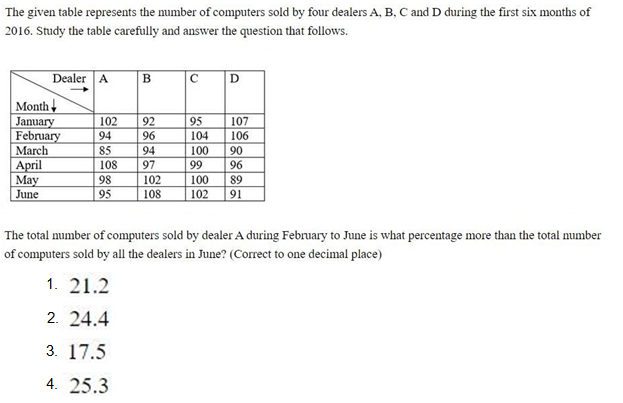Question
A can do a job alone in 66 days, B can do it alone in 55
days, while A, B, and C working together can complete the job in 11 days. In how many days can C do the job alone?Solution
LCM (66, 55, 11) = 330 Let the total work be the individual time taken by the workers. Now, total work = 330 units Efficiencies, A does each day = 330/66 = 5 units B does each day = 330/55 = 6 units (A + B + C) together do each day = 330/11 = 30 units Now, C does each day = 30-(5+ 6) = 19 units Time taken by C to complete the job alone. = 330/19 17.3 days In 17.3 days, C can do the job alone
The number of students passed in college A is what percent (approximately) the number of student passed in college C? (During all the given year)
Find the ratio between the number of children visiting Buxa Tiger Reserve and Betla National Park together.
What is the average number of women visiting all the Parks together?
The total number of children visiting Kanha National Park is approximately what percent of number of children visiting Indravati National Park?
What was the ratio of the total number of students passed and failed in college C (during all the given years?

If the number of cars produced by Company P increased by 20% in 2023 compared to 2022, how many cars would be produced by Company P in 2023?
In 2021, what is the difference between the number of cars exported by Company P and Company R ?
What is the difference between the total number of orders who were not delivered by Jabong and Myntra together and that of who were not delivered by Fl...
What is the approximate average number of students failed in college C in during all the given year?
Relevant for Exams:


